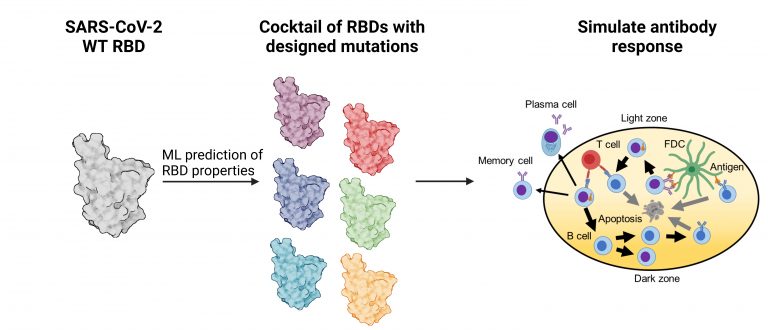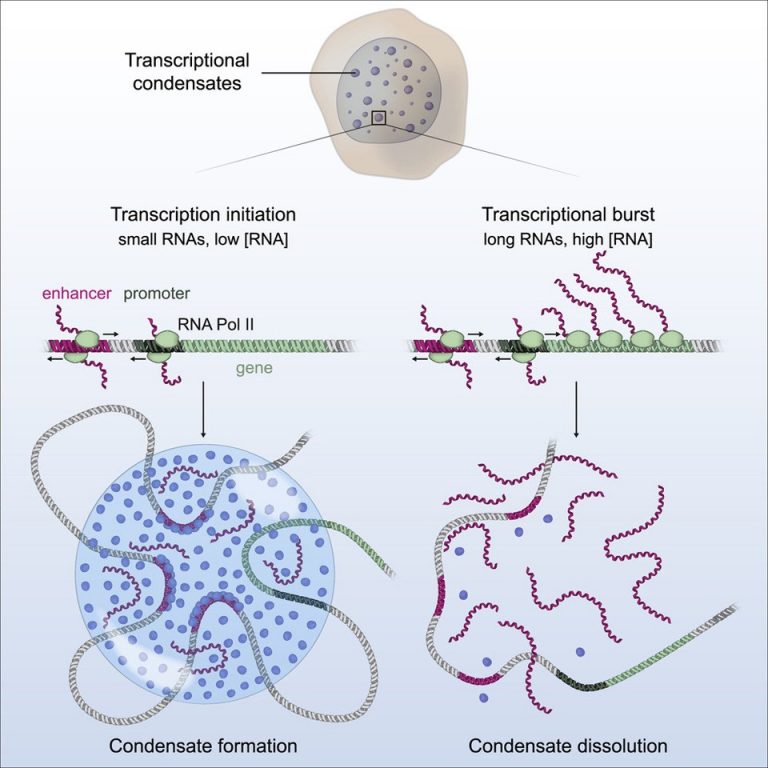The Chakraborty group’s research efforts lie at the intersection of the physical and life sciences, and has direct implications for human health. Our work can be broadly classified into two major themes that are outlined below.
Immunology, Virology, and Vaccines
The human story cannot be told without recounting the suffering caused by infectious diseases. Viruses have especially wreaked havoc, particularly in the post-agrarian world. We have survived as a species because we have an adaptive immune system, which is remarkable in that it enables us to mount pathogen-specific responses against a diverse and evolving world of microbial pathogens. Our ancestors also learned how to modulate the immune system so that it could be armed and ready to protect us from infection by specific pathogens (i.e., vaccination).
The principal focus of our research group is to understand the fundamental mechanistic underpinnings of how the immune system functions, and then to harness this knowledge to help design better vaccines and therapies. Toward this end, we bring together approaches from statistical physics with immunology and virology. Lab members work on developing and applying theoretical and computational approaches to study the collective, dynamic, and stochastic processes that underlie a systemic immune response. We also study the evolution of highly mutable viruses, and address fundamental issues that may aid the pursuit of the quest to design variant-proof or universal vaccines against such pathogens. A hallmark of the Chakraborty group’s research is the close synergy and collaboration between the lab’s theoretical/computational studies and investigations led by collaborators who are basic and clinical immunologists.
Current interests in immunology and virology can be divided into four broad categories:
-
- Upon natural infection or vaccination antibodies are produced by a stochastic, far from equilibrium, Darwinian evolutionary process called affinity maturation. We are interested in understanding how different selection forces (or external fields) applied to this dynamical process can result in enhancing the probability of desired evolutionary trajectories. The selection forces correspond to vaccination protocols and the desired evolutionary trajectories of interest are those that result in antibodies that can protect against diverse mutant strains of highly mutable viruses. We are especially interested in informing the design of variant-proof vaccines for HIV, influenza, and coronaviruses.
 References: S. Wang et al, Cell (2015); D. Murakowski, AKC, M. Nussenzweig and others, Science (2016); K. Sprenger et al, PNAS (2020); R. Ganti, AKC, Phys Rev E (2021); M. van Beek, et al, PNAS (2022); L. Yang et al, Cell Reports, (2023a); L. Yang et al, Cell Reports (2023b); E. Wang, AKC, PLOS CB (2023)
References: S. Wang et al, Cell (2015); D. Murakowski, AKC, M. Nussenzweig and others, Science (2016); K. Sprenger et al, PNAS (2020); R. Ganti, AKC, Phys Rev E (2021); M. van Beek, et al, PNAS (2022); L. Yang et al, Cell Reports, (2023a); L. Yang et al, Cell Reports (2023b); E. Wang, AKC, PLOS CB (2023)
- Upon natural infection or vaccination antibodies are produced by a stochastic, far from equilibrium, Darwinian evolutionary process called affinity maturation. We are interested in understanding how different selection forces (or external fields) applied to this dynamical process can result in enhancing the probability of desired evolutionary trajectories. The selection forces correspond to vaccination protocols and the desired evolutionary trajectories of interest are those that result in antibodies that can protect against diverse mutant strains of highly mutable viruses. We are especially interested in informing the design of variant-proof vaccines for HIV, influenza, and coronaviruses.
2. T cells express a receptor on their surface called the T cell receptor (TCR). There is a huge diversity of TCRs in an individual. T cells undergo development processes in the thymus. These developmental processes result in a repertoire of T cells whose TCRs can respond specifically to particular pathogens and is largely self-tolerant. We study the stochastic, dynamic processes of T cell development and how the aberrant regulation of these processes can result in autoimmune diseases.
References: A. Kosmrlj et al, PNAS (2008); A. Kosmrlj et al, Nature (2010); R. Yin et al, in preparation
3. Highly mutable viruses evolve continuously to evade human immune responses. We have an interest in understanding the evolution of particular viruses, and whether, and for how long, different types of therapeutic vaccination and passive immunotherapy can be effective in controlling (or even curing) infection.
References: A. Ferguson et al, Immunity (2013); V. Dahirel et al, PNAS (2011); J.P. Barton et al, Nature Comm (2016); D. Murakowski, M. Nussenzweig, AKC, Science (2016); P. Murugan, in preparation
4. A T cell can be activated by minute amounts of pathogen-derived molecules, and TCRs can distinguish between self and foreign ligands with exquisite specificity. We are interested in defining how the topology of the intracellular network of biochemical reactions enables T cells to translate TCR engagement to cognate ligands in to functional responses with such exquisite specificity and sensitivity. Of special interest is how kinetic proofreading, feedback loops and formation of phase-separated condensates affects T cell activation.
References: KH Lee, AR Dinner et al, Science (2003); J. Das et al, Cell (2009); R. Ganti et al, PNAS (2020)
Transcriptional Condensates and Regulation of Cell identity
Since 2016, our group has been interested in the regulation of transcription of genes in eukaryotes that are critical to maintaining cell identity in healthy and diseased states (e.g., heart cell, cancer cell). In collaboration with the experimental laboratories of Richard Young and Phillip Sharp at MIT, we discovered that the transcription of genes that are critical for defining cell identity are regulated by the formation of biomolecular condensates that are regulated by non-equilibrium processes. Our work in this area brings together statistical physics and eukaryotic cell biology.
Current interests in this area include:
- Different types of RNA are involved in transcriptional condensates, and these nucleic acids interact with other transcriptional molecules and are produced by non-equilibrium processes. We are interested in understanding the dynamics of transcriptional condensate formation and dissolution. An issue of special interest is how non-coding RNAs may regulate transcription of messenger RNA at coding genes.

References: D. Hnisz et al, Cell (2017); B. Sabari et al, Science (2018) ; K. Shrinivas et al, Mol. Cell (2019) ; J. Henninger et al, Cell (2021) ; P. Natarajan et al, Biophys Journal (2023); H. Schede et al, Nature Comm (2023)
2. There is enormous interest in understanding how DNA (chromatin) is packed into the nucleus. Current understanding of chromatin structure largely relies on interactions between specific parts of the genome sequence. We are interested in understanding how non-equilibrium processes that are ubiquitous in the nucleus (e.g., transcription) influence chromatin structure. We have an aspiration to understand how condensates that form at enhances and corresponding promoters interact.

References: Goychuk et al, PNAS (2023)
3. We are also interested in defining the statistical features of the sequences of intrinsically disordered regions of transcriptional molecules that enable specific molecules to partition into particular transcriptional condensates and not others.
